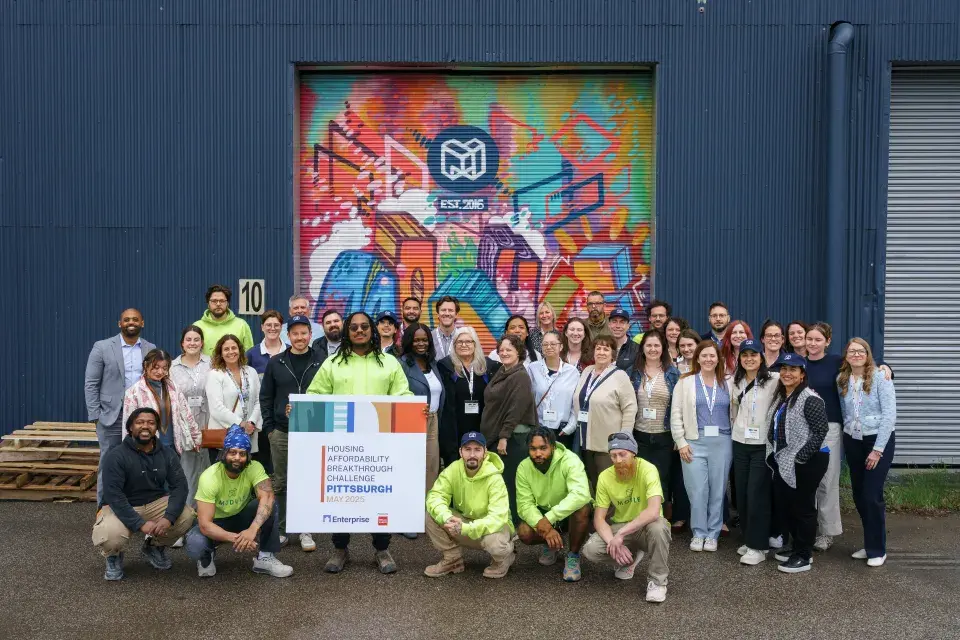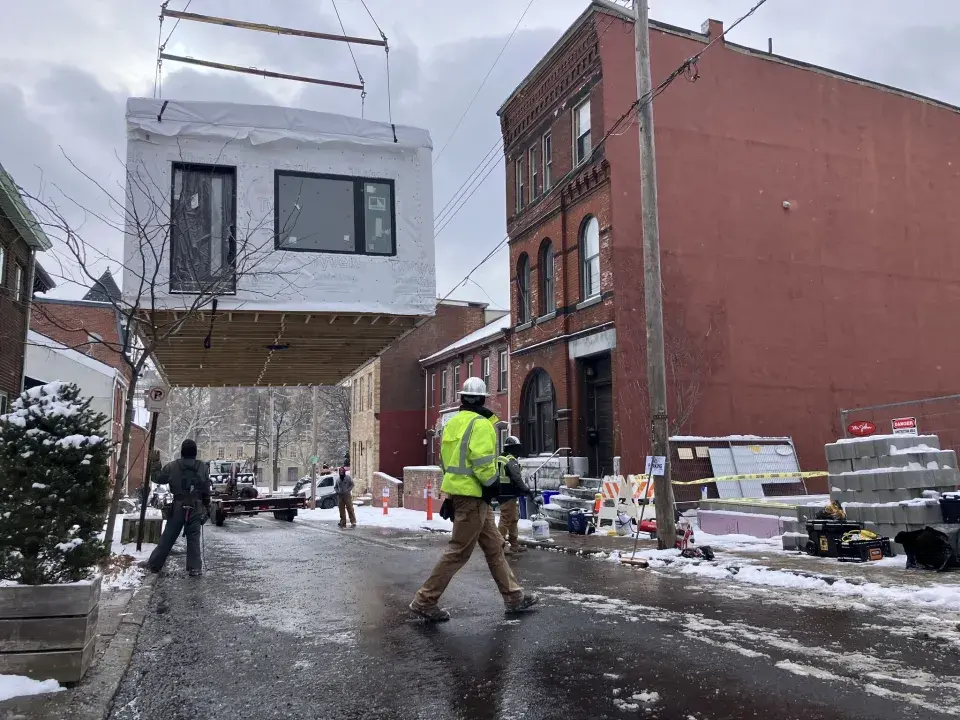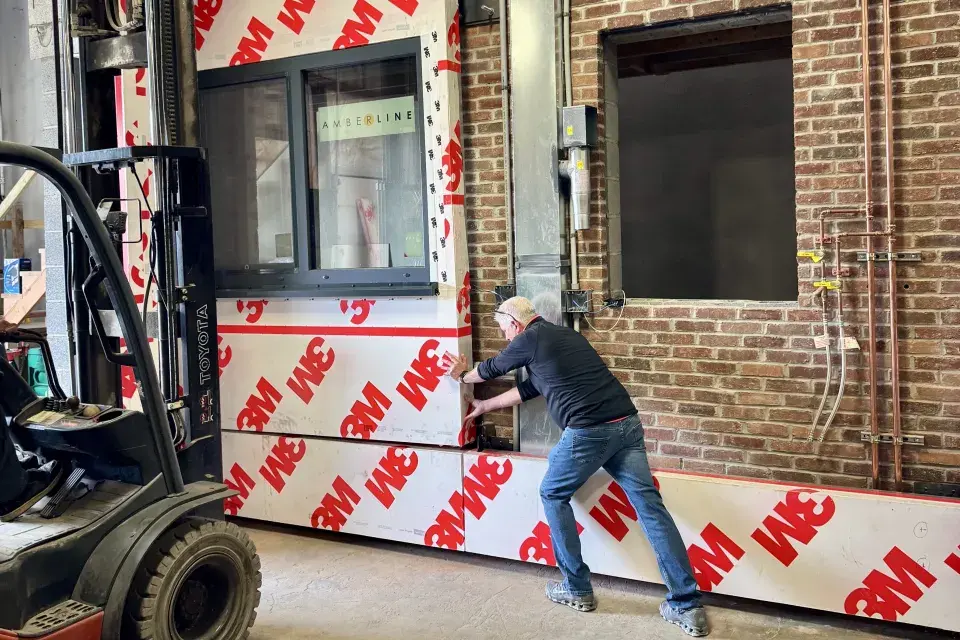In his home state of Alabama, Mark Martin has seen how hard it can be for young people to find good jobs and affordable housing. “Many are growing up in chronically underfunded communities,” he said. “But the best solution is one that links young people to their communities. It’s not about outside solutions.”
Martin is the founder and chief financial and housing officer at Build UP, which blends a high-quality education with work experience to open a world of possibilities to students, from jobs in the high-demand building trades, to college and homeownership. Earlier this year, Build UP scaled its flagship high school in Birmingham with the opening of a pre-k through 12 school in Selma.
With too few skilled workers in construction and other trades, project delays cost the U.S. an estimated $10.8 billion each year. “Within construction, we’ve seen the labor force decline because very few people are coming into the industry,” said Martin. “Trades and effective training programs have been squeezed out of public schools. We want to fill that gap.”

To date, Build UP has built or rehabbed 40 homes in Birmingham, with some students now living in homes they or their classmates built. Martin aims to create a growing network of schools and programs nationwide serving underserved communities by replicating and scaling Build UP’s innovative model.
A Catalyst for Housing Innovation
Build UP is a winner of the Housing Affordability Breakthrough Challenge, an innovation competition led by Enterprise with the collaboration and support of the Wells Fargo Foundation. Since 2020, the Breakthrough Challenge has helped incubate and propel 12 nationwide housing solutions across three broad focus areas: construction, finance, and resident services and programs.
The competition focuses on scalable, implementation-ready housing solutions, drawing over 1,300 applications since 2020. Winners received grants up to $3 million, and have collectively leveraged over $195 million in additional funding to advance their innovations. The cohort regularly meets virtually and in person to see the work in action, share ideas, and, in some cases, find ways to collaborate.

With 42 million U.S. households spending more than a third of their income on housing – the highest level since 2011 – the Breakthrough Challenge and its winners are tackling the nation’s affordability crisis head-on. Like Build UP, several winners are working at the intersection of housing, education, and workforce development.
Good Jobs and Homes that Grow
Two Texas nonprofits, cdcb (come dream. come build) and buildingcommunityWORKSHOP won the 2020 Breakthrough Challenge for their modular homeownership innovation. DreamBuild designs, builds, and finances locally manufactured modular homes in communities across the Rio Grande Valley, where poverty persists and homeownership remains unattainable to many.
Buyers customize their homes and can add “boxes” over time so the homes are able to grow along with the family. cdcb has built 38 homes since 2023, with another 43 planned for 2026.

“We believe that homeownership should be a right for everybody,” said cdcb CEO Nick Mitchell-Bennett, adding that homeownership remains the main source of wealth creation and accumulation in the U.S. “Just because you make $9 an hour does not mean you should not be able to own a home.”
Along with creating a path to homeownership, training workers, providing gainful employment, and producing homes locally are key, said Mitchell-Bennett.
“It doesn’t do anyone good to build houses if people can’t afford to live in them, or to offer good jobs if there is no housing,” he said.
He envisions DreamBuild factories – called “farms” because that’s where homes are grown – every 400 to 500 miles, so more communities can reap the benefits of local workforce development, construction jobs, and quality affordable homes.
Powering Revitalization with Modular

Breakthrough Challenge winner Module creates affordable homes out of a facility in Pittsburgh, while providing training and jobs. “I’m from Pittsburgh. It’s a rust-belt city with tens of thousands of vacant properties,” said Brian Gaudio, Module co-founder and CEO. “One of our initial questions was, ‘Could we develop a housing product that fits on these lots and helps rebuild the fabric of neighborhoods – and could we do it at an affordable price point?’”

In its 22,000-square-foot manufacturing hub, Module builds homes faster than those traditionally built on site, which saves money. The company caters to buyers making less than 80% of area median income, so many are first-time homeowners.
Most recently, Module received approval for Pittsburgh’s first multifamily modular development. Eliza Street Housing will feature 30 units on land that was once home to the J&L Steel Mill.
Module partners with the Trade Institute of Pittsburgh (TIP), and has trained 45 people with significant barriers to employment in modular construction. They have hired five TIP graduates to date, while others have joined the local workforce. Given the challenges of finding skilled labor, workforce development is an integral part of the housing puzzle, Gaudio said.
Part of our hypothesis was that if we get more people in the construction trades, we can increase the supply of housing, which should ultimately reduce the cost of housing.
Brian Gaudio, Module Co-Founder and CEO
The Benefits of Factory-Built Homes

Factory settings offer the opportunity to learn multiple skills, including electrical, plumbing, and carpentry, according to Breakthrough Challenge winner David Goldstein, founder and CEO of Hydronic Shell Technologies, who adds that less fragmentation occurs in factories, compared to working on a construction site, where those jobs are normally contracted separately.
Goldstein says factory jobs also yield more production than on-site jobs. They’re also better for workers, who are not exposed to weather elements, have more consistent hours, and don’t need to travel to different job sites.
Hydronic Shell’s innovation entails retrofitting older high-rise buildings with modern HVAC systems installed on building exteriors, which enables residents to remain in their homes during renovation with minimal disruption. The process of connecting pre-fabricated panels is quicker and more cost-effective than running ducts and pipes through the building.
Noting how the construction industry can be risk-averse and resistant to innovation, Goldstein said their solution has the potential to transform older affordable housing with poor ventilation and inefficient heating and cooling and improve quality of life. “It’s about uplifting people's lives from a comfort and health perspective,” he said.
Because of the uniform makeup of much affordable housing, the HVAC innovation also offers significant potential to scale.
“Many buildings follow a similar structure of rectangular blocks with the same masonry and punched windows,” Goldstein said. “So when you solve for one, you are really solving for tens or hundreds of thousands of buildings and millions of people.”
For a deeper dive, read The Case for Housing Innovation, our white paper published in collaboration with Wells Fargo, Ivory Innovations, and Terner Labs.
Vesna Jaksic Lowe is an award-winning journalist. Her stories have appeared in the New York Times, the Washington Post, and the New York Daily News.
